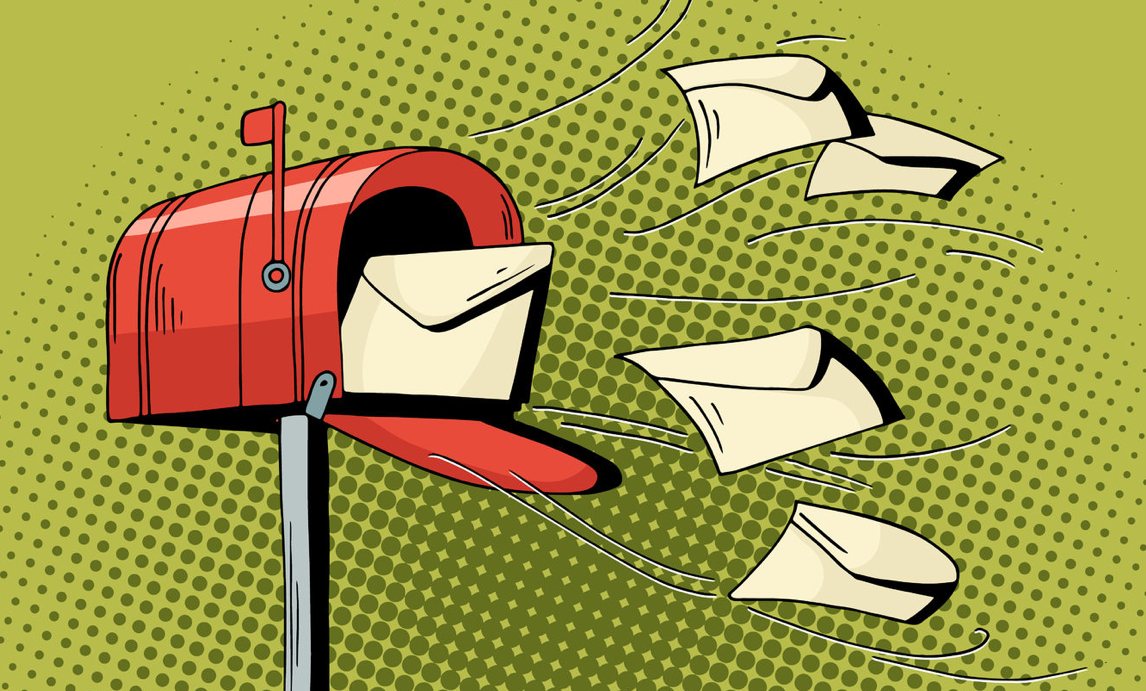People really hate junk mail. Never mind the ways direct mail creates jobs, fuels economic growth, and funds good deeds. The problem has more to do with sheer volume: the average U.S. adult receives 41 pounds of junk mail a year. It adds up to 4 million tons of mail — 60 billion pieces — made from the pulp of more than 100 million trees. And 44% of it never gets opened!
While the majority of direct mail is commercial, direct mail is the lifeblood of many nonprofits. And that’s our problem. Nobody wants to get (or send) junk mail, yet many nonprofits have no choice but to be big direct mailers. Which leaves us in a bind: If you stop sending direct mail, you face extinction. But if you keep sending it, you’re guilty of some kind of environmental crime.
So let’s find a way out of this conundrum.
First, let’s define junk mail.
Junk mail is any mail that’s unwanted, out of context, and irrelevant. The stuff that shows up in your mailbox that just doesn’t make sense.
The thing that makes it junk is the lack of a meaningful connection to the recipient’s life. The most usurious credit card offer, complete junk to almost everyone who gets it, might not be junk mail for some because it’s exactly what they want and need at the time. (Okay, bad example; but surely somebody responds to those!)
Junk mail doesn’t become junk until it hits a recipient’s mailbox. There’s a kind of quantum physics quality to it.
Imagine it: 62 billion pieces leaving the comfort of the letter shops where they were born, their inky, windowed little faces shining with optimism and dreams of greatness. They can hardly wait to be opened, read with relish and promptly responded to.
But for too many of them, something goes awry. When they reach their intended mailboxes, they’re tossed aside unopened or cursed before being torn in half and thrown out.
To understand what makes our direct mail transubstantiate into their unwanted junk mail, let’s look at a typical donor we’ll call Ms. Donor.
Ms. Donor gets a lot of mail from nonprofit organizations. She doesn’t know why she gets it. She doesn’t want it. She thinks it’s a huge waste, and it annoys her.
But not all of it.
Some of that mail, she’s glad to see. She opens it. Reads it. Enjoys it. Why? Because she knows why those organizations write to her. She has a relationship with them — she’s a partner, not a mass-audience prospect.
What’s the difference? Well, some of those organizations have done a little extra work to make themselves relevant to Ms. Donor. You can do those things too.
Here are some of the things that separate the non-junk organizations (NJOs) from the bulk of nonprofit junk mailers:
- NJOs work hard to be relevant. Their messages are about the donor and how she can change the world. Junk mail tends to focus on the organization that sent it — how powerful, effective and just-plain-cool it is. There’s little reason for a donor to care about that.
- NJOs give the donor something real to do. Junk mailers probably do some exciting things that would light Ms. Donor’s fire, but they don’t tell her that. Many are stuck raising unrestricted funds, which they never get beyond describe as “Support us.” So they stay irrelevant.
- NJOs invite the donor to join something unique and exciting. Junk mail, however, has a “me-too” quality, with only vague philosophical and branding differences between organizations that work in related sectors. In fact, the donor has trouble discerning one organization that’s in her mailbox from another.
- NJOs strive to keep their data clean. Junk senders’ offerings are plagued with errors, misspellings, duplicate records, and other slop. They might as well slap a big sticker on each envelope that says, “WARNING: JUNK MAIL! PLEASE DISCARD.”
- NJOs pay attention to the data and have a good idea who’s likely to respond to any given mailing. Recency, amount, seasonality, topic, style — all these things help predict the likelihood of a response. The junk mailers — well, they just dump mail into the post and hope for the best.
- NJOs give donors control. If a donor wants less mail, non-junk organizations send less mail. And NJOs don’t wait for donors to get ticked off to take the initiative; they actively give them choices over what media they prefer and what topics they care about.
- NJOs close the loop. They come back and tell Ms. Donor what happened with the money she sent. They shower her with thank-you letters, newsletters, and special reports that remind her how important she is. The quickest way to make yourself into a junk mailer is to give donors the impression their gifts fall into a huge black hole and make no difference.
You can be a Non-Junk organization. It’s a little more work, but it raises a lot more money. And it isn’t an environmental crime!
Don’t miss my course on direct mail fundraising, 7 Steps To Creating Record-Smashing Direct Mail. It’s all about transforming your fundraising from junk mail to a welcome part of every donor’s life! Find more information when you join The Fundraisingology Lab!







